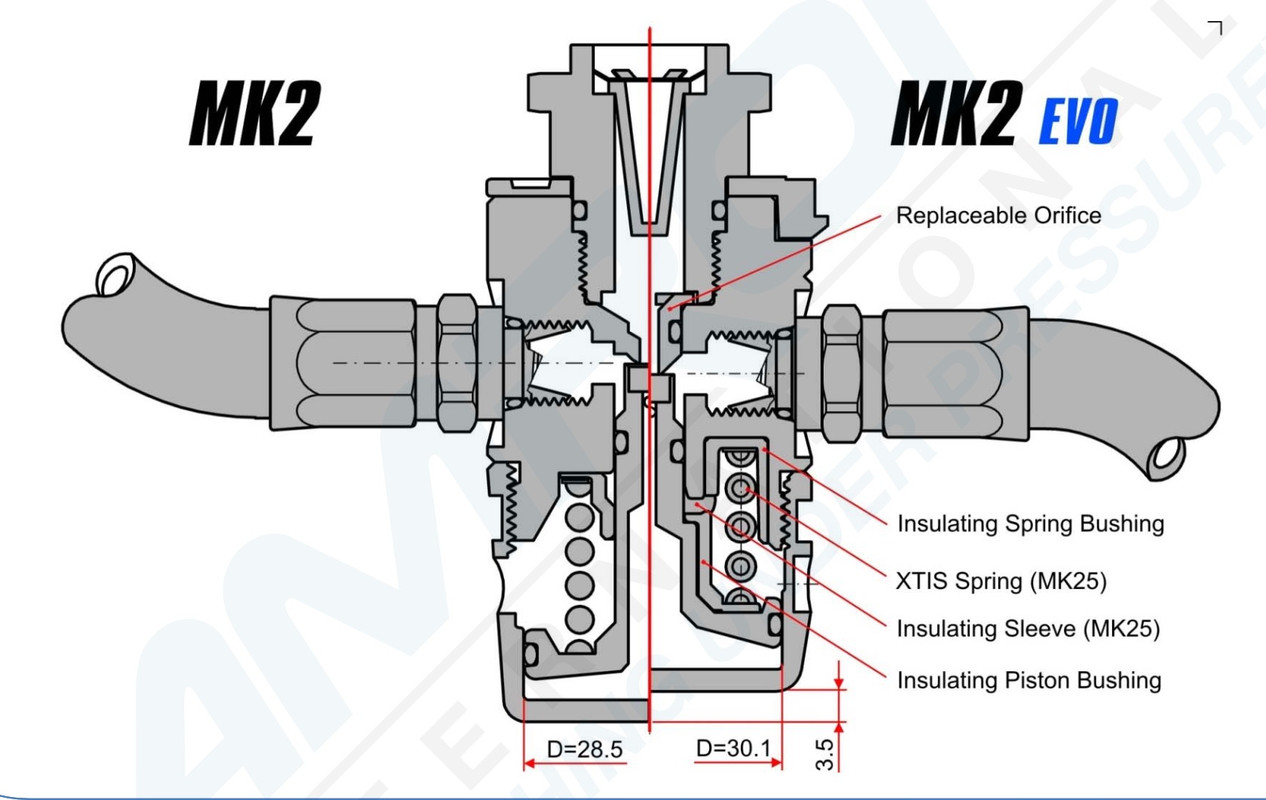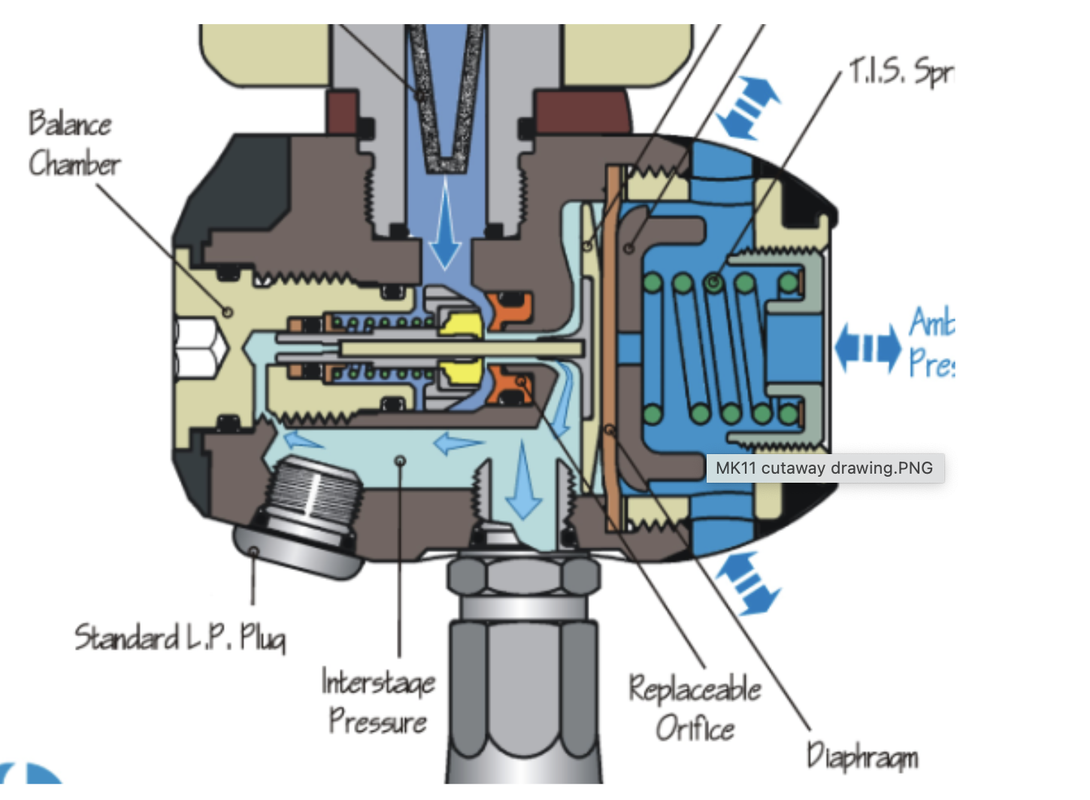The Mark 2 Evo is not low performance at 90 cfm (500 psi) to109 cfm (3000 psi). The AL Conshelf/Titan/Core/Helix/Legend first stage is only something like 75 cfm at 3000 psi. The first stage is not the restriction in air delivery, even for a Mark 2E or lesser regs like the Legend/Conshelf design ubiquitous to AL. A G250/G260 second stage can flow up to 64 cfm, a C370 is 57 cfm. So, two G260s on open flow could exceed the flow capacity of a Mark 2E, hmmm. BTW, the old Conshelf-Legend first stage is very tightly balanced, more so than a Mark 11 which has up to about a 12-15 psi swing from 3000-500 psi. But, I see more IP drop per breath and slower recovery with the AL first stage than with the Mark 2E. Why, the Mark 2E has a larger and less restricted volcano orifice. It is larger in area and is not occluded by the pin, same for the Mark 11, which also has a pin running though it.


Let's look further. A male human in good fitness at moderate exercise levels would use 3.5l per breath and take 30 bpm which converts to 3.5 cfm. The air volume does not change with depth, only density. Elite athletes can reach 60 or more bpm and ventilate 180 lpm (6.4cfm). Again, the volume at depth does not change, just the density.
A Mark 2E can flow more air than a single G260. A Mark 11/17/19 (which is not especially well balanced and does not matter with a balanced second stage) can flow up to 195 cfm thus exceeding the flow rate of two G260s. Hmm, but two humans, assuming they are elite athletes working at their maximum effort would consume 12.8 cfm. That would be emptying an aluminum 80 (77 cf) in about 6.5 minutes at the surface or 1.6 minutes at 4 atm.
Higher performance first stages should have less IP drop and quicker recovery under flow. Thing is, none are working at or even near the maximum capacity since the human in the equation is the limiting parameter. I do not see but slightly more IP drop and slower recovery with a Mark 2E vs my Mark 25 per breath. I do see more IP drop/Delta between a gauge at the first stage and one at the second stage with a "long" hose vs a "short" hose. Does this matter, apparently not.
Less is more, minimalism, and that includes the parts count of my first stage

. How much air flow capacity does a scuba diver need? Exactly enough to satisfy their tidal volume per breath at their working rate which is rarely more than 30 bpm.





